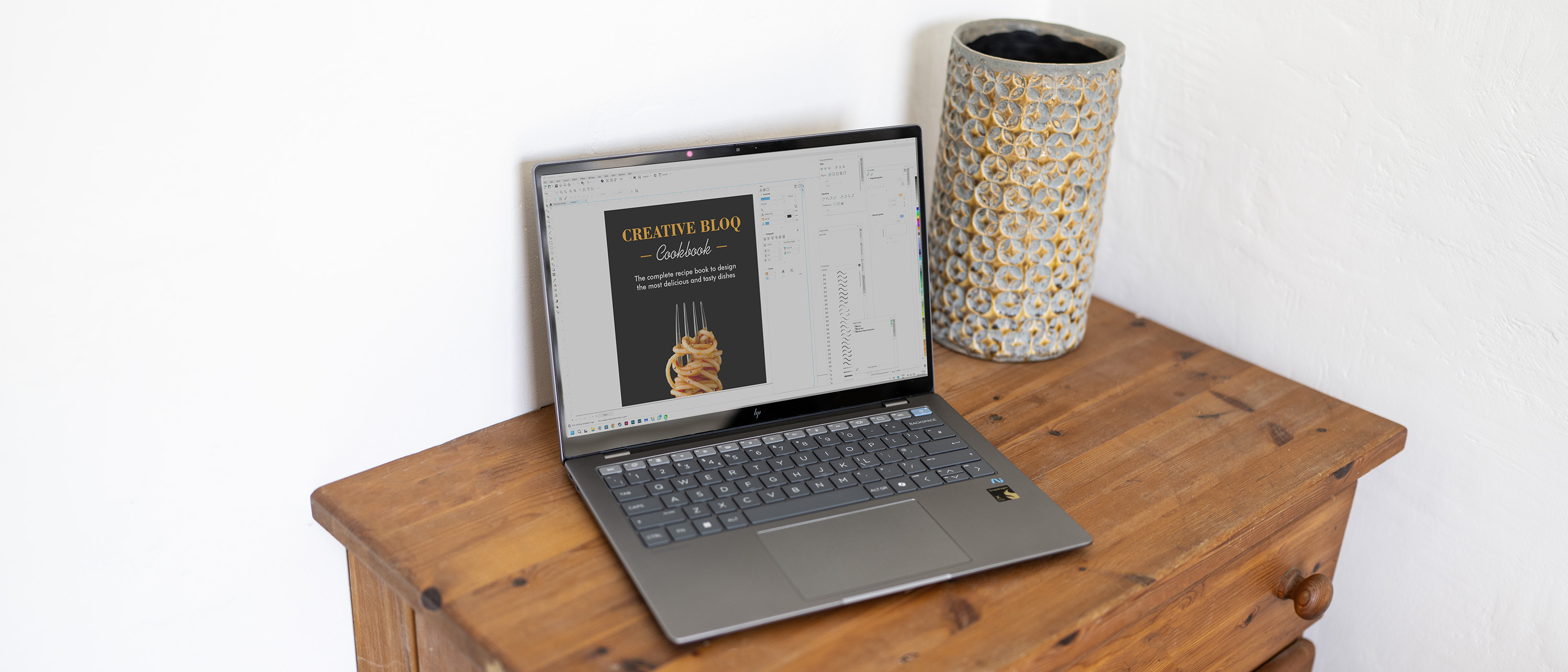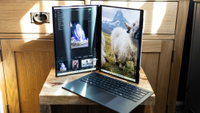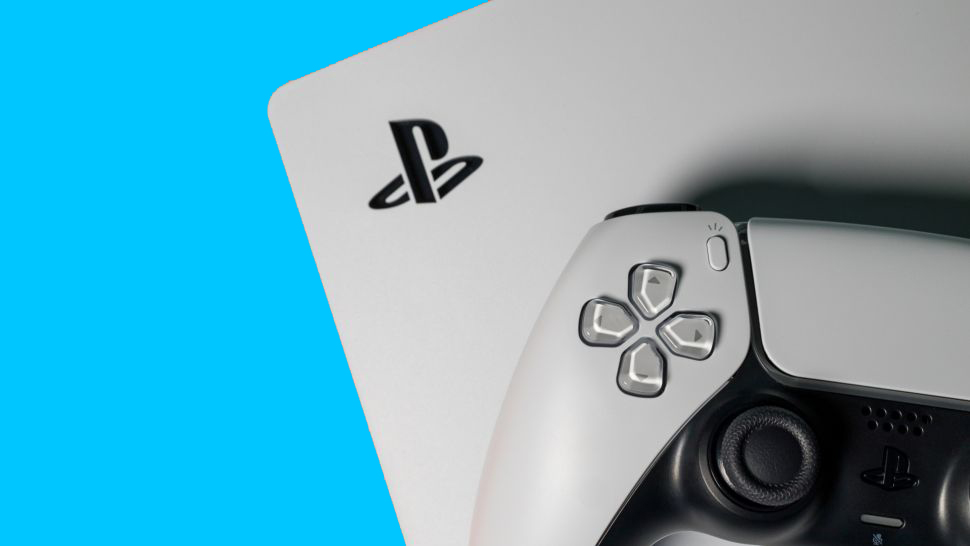Our Verdict
While it suffers from the same GPU issues - namely a lack of power and compatibility - as other Snapdragon laptops, the HP Omnibook X 14 pulls a rabbit from the hat in the form of extremely long battery life, even when compared to other ARM-based machines. This means it’s ideal for the traveller, the sofa-worker, or the late-night idea-haver.
For
- Enormous battery life
- Decent screen
- Portable build
Against
- Usual weak Snapdragon GPU
- Could have more ports
Why you can trust Creative Bloq
Copilot+ productivity laptops are a vibrant sector of the PC market right now, the new Snapdragon processors proving that they’ve got what it takes to stand up with the Intels and AMDs of the world. The Omnibook X is interesting because it manages to insert itself almost perfectly between the two MacBook Air models - its 14in screen is equidistant between the Macs’ 13 and 15in displays, as is its weight, and its price is about halfway too, once you’ve adjusted the Airs’ spec to match.
With the 12-core Snapdragon X Elite on board, the Omnibook X doesn’t have to worry about CPU power, but its GPU suffers from the same lack of power as we’ve seen in other ARM-based PCs using the same chip. Luckily, it’s a well built and easy to use laptop that provides enough power for everyday tasks without providing spectacular performance, but balances this with some of the longest battery endurance we’ve seen.
Key specifications
CPU: | Qualcomm Snapdragon X Elite |
NPU: | Qualcomm Hexagon |
Graphics: | Qualcomm Adreno |
Memory: | 16GB LPDDR5x |
Storage: | 1TB SSD |
Screen size: | 14in |
Screen type: | IPS touchscreen |
Resolution: | 2240 x 1400 |
Refresh rate: | 60Hz |
Colour gamut (measured): | 81% P3 |
Brightness (measured): | 306 nits |
Ports: | 1x USB-C 40Gbps, 1x USB-C 10Gbps, 1x USB-A 10Gbps, 1x 3.5mm headphone jack |
Wireless connectivity: | Wi-Fi 6E, Bluetooth 5.3 |
Dimensions: | 31.29 x 22.35 x 1.43 cm |
Weight: | 1.34kg |
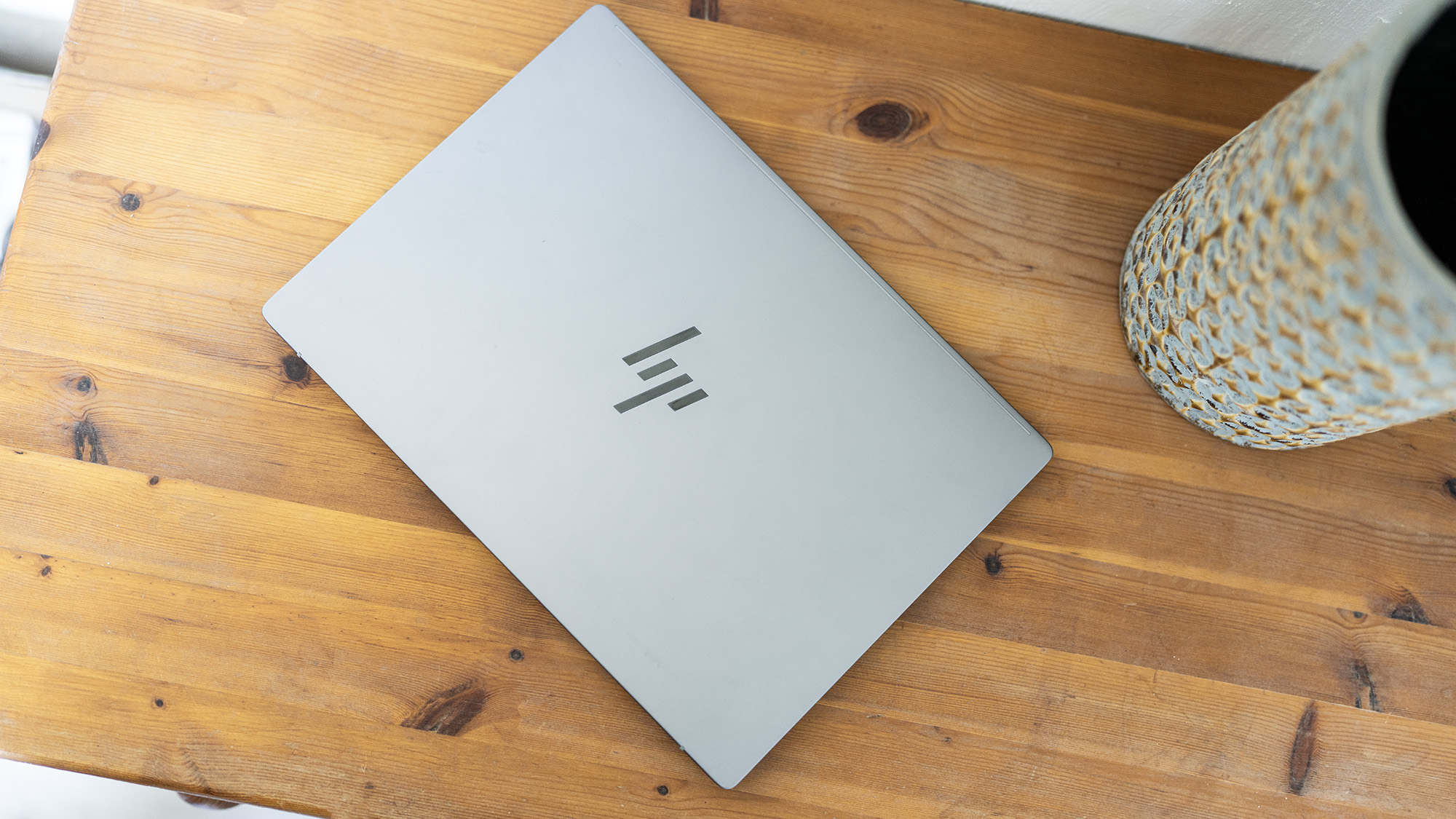
Design, build and display
Laptops in this sector of the market, and we’re including the MacBook Air in that, tend to be silver-grey rectangles, and that’s exactly what HP has served up here. It’s a traditional laptop rather than a two-in-one model, and doesn’t fold flat, but has still been equipped with a touchscreen, though it could do with a bit of a stiffer hinge so that the screen doesn’t wobble and shift backwards when poked with a finger.
The new HP logo, which probably isn’t that new any more but feels that way because the company stuck with the previous design for so long, looms large on the back of the lid, its mirrored surface distinct from the brushed aluminium look found elsewhere.
And despite being reasonably light and, with its 14in screen, easy to pack away, the Omnibook X feels solid. There's the tiniest bit of a bend if you pick it up by the corner, but not enough to prevent the trackpad from working, and the keyboard is actually pretty nice to type on, with enough space between the keys, though the travel distance is quite shallow. The keys themselves are picked out in mid-grey, with the function row a lighter shade and the power button picked out in blue. There's no fingerprint reader, but the built-in webcam provides Windows Hello face recognition.
• Easily portable
• Decent keyboard
Design score: 4/5
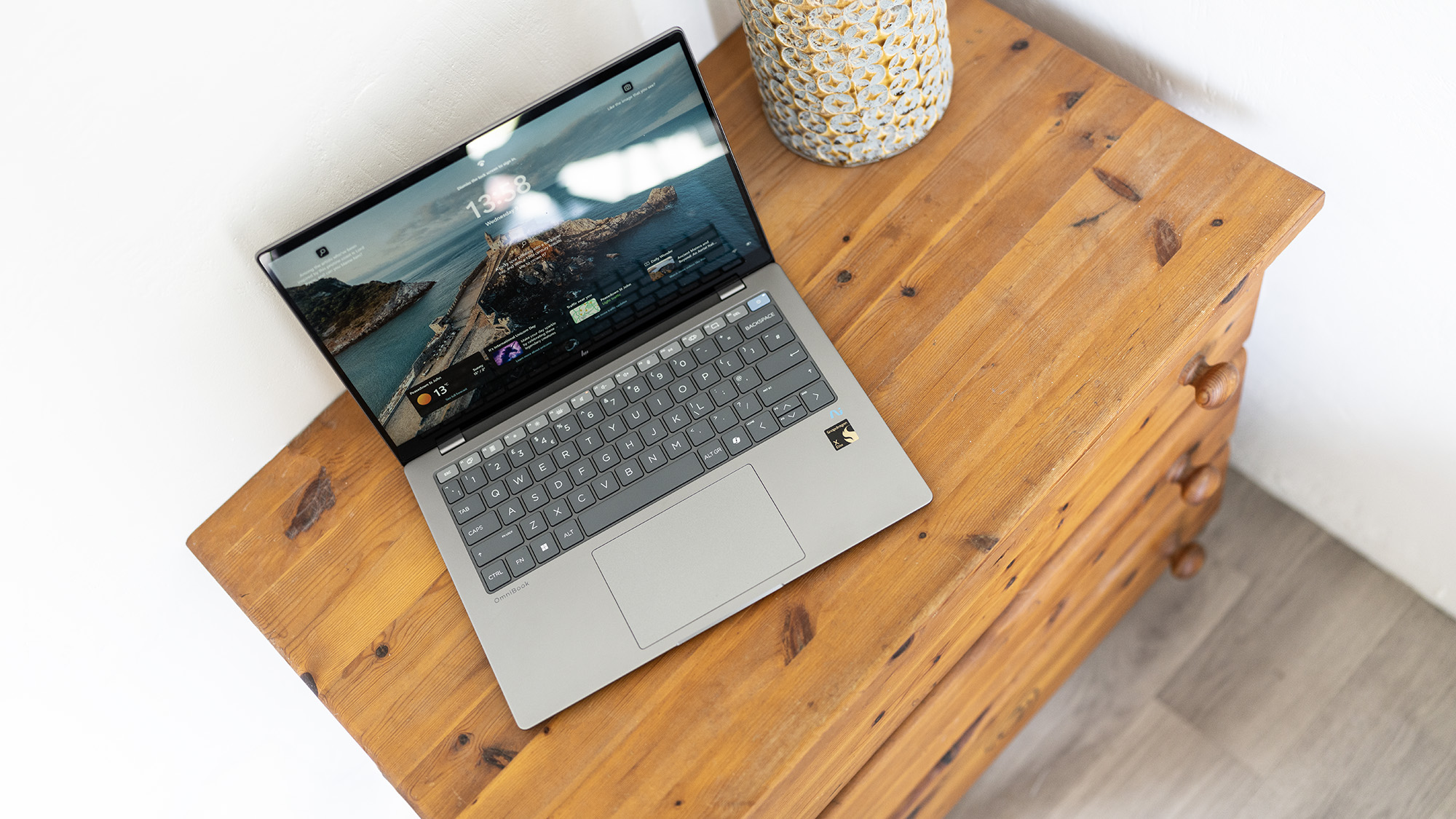
Features
The Omnibook X isn’t overburdened with ports, but what’s there is just enough. You get two USB-C ports, one capable of 40Gbps, though telling it apart from its neighbour, which transfers at 10Gbps, is a matter of squinting at some very small logos printed next to them. They’re both used for charging, and both can hook up to an external monitor, which means you’ll want a dock or be left reliant on the lone USB-A 10Gbps port, which is a clever folding slimline model to avoid making the laptop any thicker, for things like flash drives. With Wi-Fi 6E on board you’ll be able to avoid using Ethernet unless you really need to, though Wi-Fi 7 would have been nice.
There's also still a Snapdragon software issue, though things have improved in the past year. Open the Creative cloud app, click on the Graphic Design tab, and you’ll find Photoshop and a beta version of Illustrator but still no InDesign. There is a beta version of the layout software in the Beta tab, but it hasn’t been promoted to the main page yet. Premiere Pro is there, and outside the Adobe ecosystem you can find DaVinci Resolve Studio in ARM native form, while CorelDRAW Graphics Suite supports ARM from version 2024 onward, as does Affinity from version 2.5. Other apps will run using Windows’ Prism compatibility layer, but all this time after the release of the Snapdragon PCs, it’s a bit disconcerting to see the Adobe apps still in beta.
Likewise, the GPU is not only weak, but isn’t compatible with many of the tests we use to put PCs through their paces. A second generation of Snapdragon chips with beefed-up integrated GPUs, or some with discrete graphics processors, can’t come soon enough.
• Fast USB
• An extra port would be nice
Feature score: 3/5
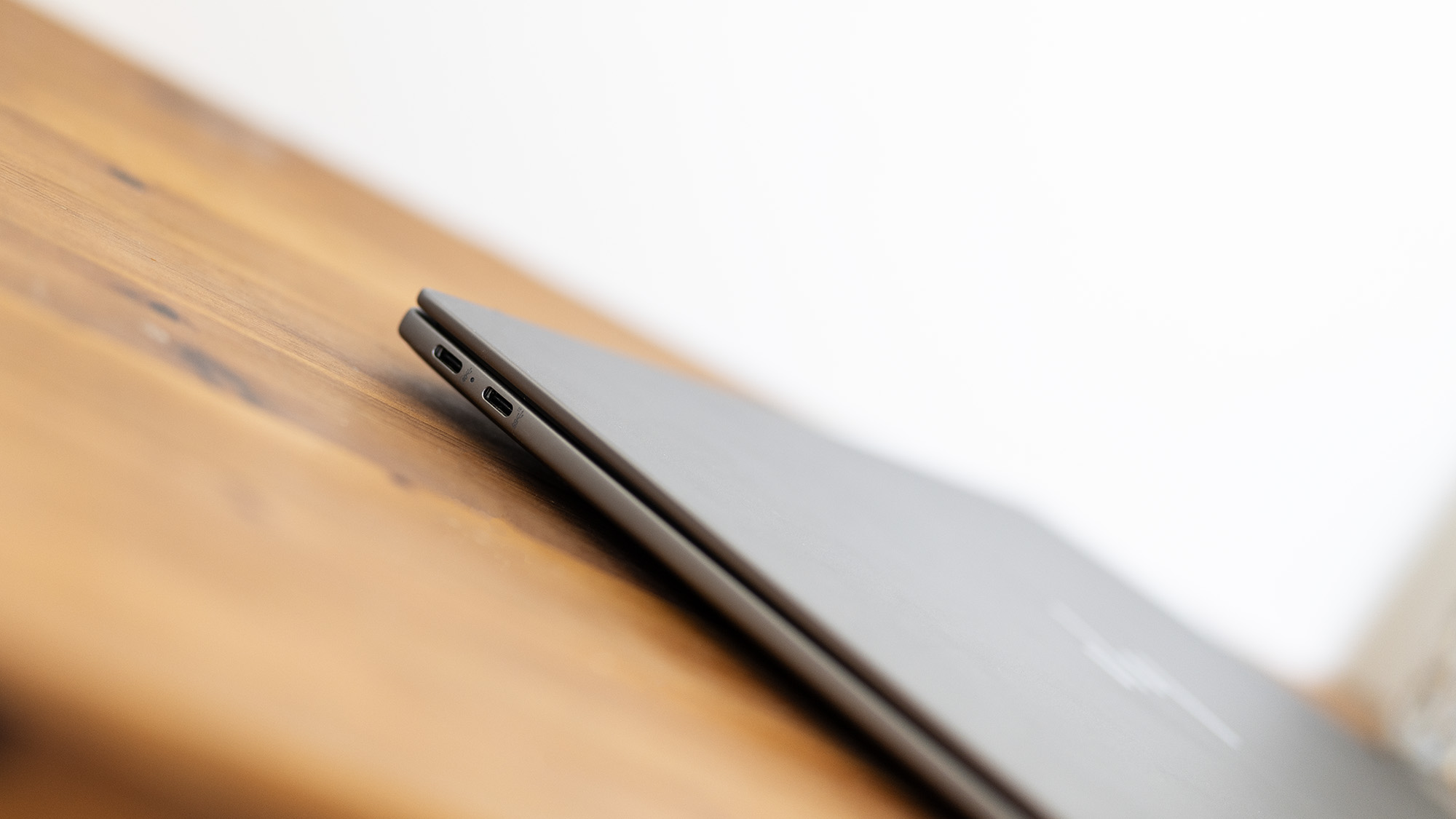
Benchmark scores
We test every one of our laptops using the same benchmarking software suite to give you a thorough overview of its suitability for creatives of all disciplines and levels. This includes:
• Geekbench: Tests the CPU for single-core and multi-core power, and the GPU for the system's potential for gaming, image processing, or video editing.
• Cinebench: Tests the CPU and GPU's ability to run Cinema 4D and Redshift.
• UL Procyon: Uses UL Solutions' Procyon software suite to test the system's ability for AI image generation in Stable Diffusion, its Microsoft Office performance and its battery life.
• Topaz Video AI: We use Topaz Video AI to test the system's ability to upscale video and convert video to slow-motion.
• PugetBench for Creators: We use the PugetBench for Creators benchmarking suite to test the system's ability to run several key tasks in Photoshop and DaVinci Resolve Studio, as well as its performance when encoding/transcoding video.
• ON1 Resize AI: Tests the system's ability to resize 5 photos to 200% in a batch process.
| Header Cell - Column 0 | Header Cell - Column 1 | [enter product name] |
|---|---|---|
GEEKBENCH 6 | CPU Single-core: | 2371 |
| Row 1 - Cell 0 | CPU Multi-core: | 12433 |
| Row 2 - Cell 0 | GPU OpenCL: | 20215 |
CINEBENCH 2024 | CPU single-core: | 106 |
| Row 4 - Cell 0 | CPU multi-core: | 627 |
| Row 5 - Cell 0 | GPU: | GPU not compatible |
UL PROCYON | AI Image Generation (Stable Diffusion 1.5) | not compatible |
| Row 7 - Cell 0 | Office Productivity Benchmark: | 205000 |
| Row 8 - Cell 0 | Battery Life Benchmark: | 17h 8m |
TOPAZ VIDEO AI | Enhancement: | error |
| Row 10 - Cell 0 | Slowmo: | error |
| Row 11 - Cell 0 | Combined: | error |
ON1 RESIZE | 200% resize time: | 158,250ms |
Overall: | 6415 | |
| Row 14 - Cell 0 | General: | 58.5 |
| Row 15 - Cell 0 | Filter: | 70.4 |
Overall: | GPU not compatible | |
| Row 17 - Cell 0 | GPU Effects: | GPU not compatible |
| Row 18 - Cell 0 | Fusion score: | GPU not compatible |
| Row 19 - Cell 0 | AI score: | GPU not compatible |
| Row 20 - Cell 0 | H.264 encoding: | GPU not compatible |
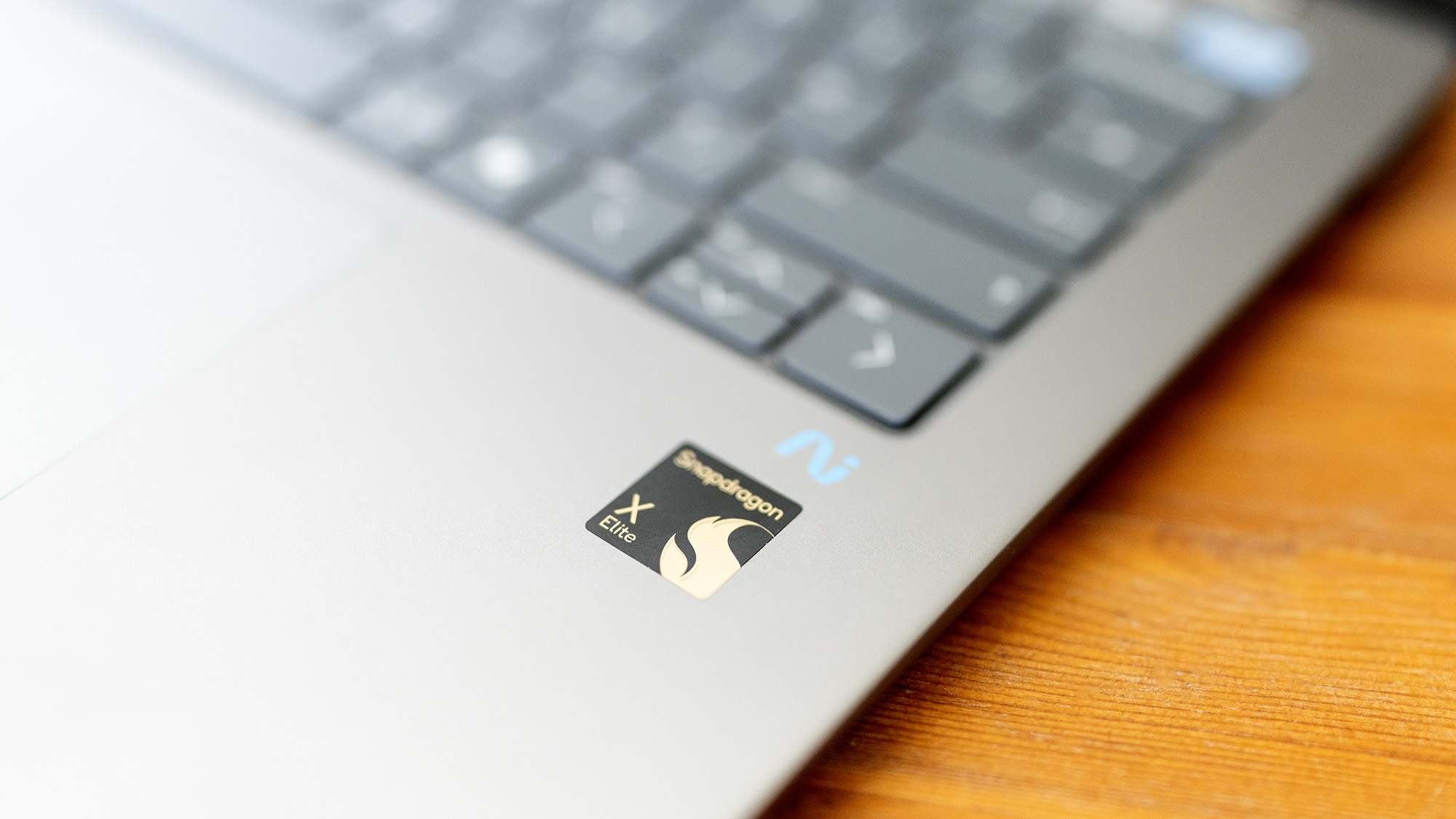
Performance
In the demanding Cinebench 2024 rendering benchmark, the Omnibook posts a multi-core CPU score that’s lower than we’re used to seeing from laptops with the same chip in them. Its score of 627 is beaten by the Surface Laptop 7, Asus Vivobook S 15 and Lenovo Slim 7x, both of which score in the 800s. Its multi-core Geekbench 6 scores are lower than the other machines too, though the Omnibook does manage to pip the Surface in the GPU test by about 5%. Deviations like this can be caused by various cooling systems and internal architectures used by the different laptop manufacturers, even the ambient temperature in the testing lab can have an effect if thermal throttling is occurring. The Omnibook was incompatible with a few of our tests, largely because the Snapdragon doesn’t support the AVX-512 extensions seen in X86 chips
But while it may not be pumping out quite as much processing power as others, this isn’t something you’ll notice in everyday use, as it’s a perfectly nippy machine when you’re browsing, writing, even photo editing. What you will notice is the battery life, and it’s immense. Our battery life test involves setting the screen to 50% brightness, charging the battery fully, putting the laptop in Best Performance mode, then playing a looping video until it shuts down. We’re usually able to set this process in motion when we clock off late-afternoonish to go to the pub, and have a result waiting when we return the next morning, but for the Omnibook X, we were surprised to see it still churning away when the first lattes were being brewed. It was still going when we started on the croissants, it outlasted the fruit platter, and a battery warning indicator had only just flashed onto the screen when we were considering mid-morning snacks. It finally shut down after 17 hours of constant use.
For context, the Surface Laptop 7 lasted just over nine hours, the Lenovo Yoga Slim 7x for almost 12 hours, and the Asus Vivobook S 15 for nearly 14. The Omnibook becomes one of the first truly two-day laptops we’ve tested, and if you set it to power saving mode, allow it to go to sleep occasionally, and don’t tax it too much, you might be able to squeeze even more out of it.
And then there's the screen. It comes with a nice 2.2k resolution that sets it above 1080p models, and the touch sensitivity is nice but hardly essential in a business machine. When put through the gauntlet of colourimeter tests, it displayed 100% of sRGB, 79% of Adobe RGB, and 81% of DCI-P3, with a maximum brightness of 306 nits. We’ve seen better, but we’ve also seen much worse.
• Good CPU speed
• Weak GPU
Performance score: 3/5
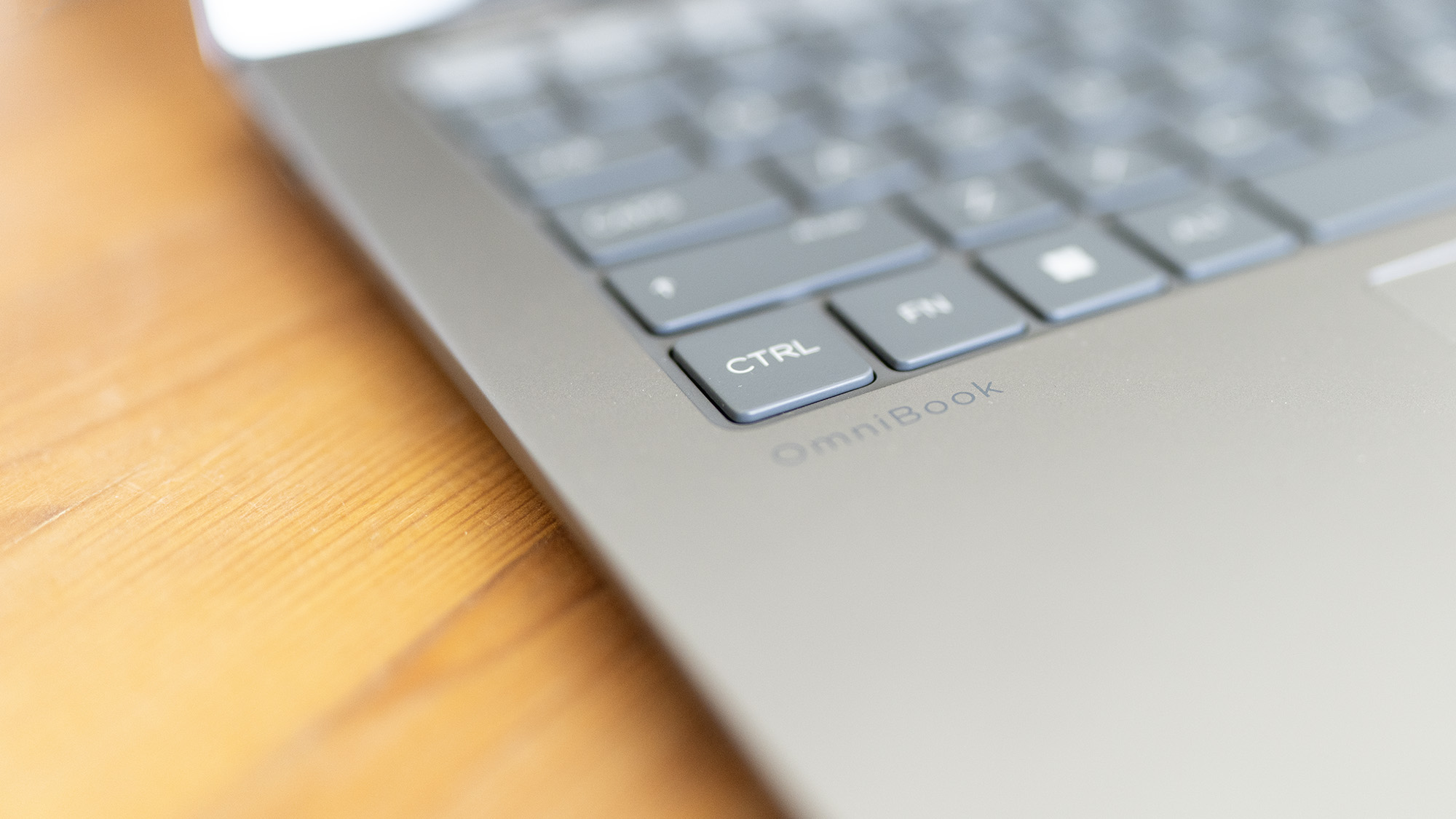
Price
£1,349.99
As we noted earlier, the Omnibook X’s price occupies a zone right in the middle of similar machines. If you want a Surface Laptop 7 with similar specs, you’ll have to pay more, while the Asus Vivobook S 15 starts cheaper if you’re prepared to lose a bit of SSD space. As such, it’s a good value proposition if you’re looking for a laptop that will last a long time on a single charge, but you'll find plenty of cheaper options out there.
Value score: 3/5
Who is it for?
• Home workers
This is a laptop for those who want to jot down ideas or do a quick sketch at an ungodly hour before the inspiration evaporates, for those who work out of their cars, cafes, hotel bars or their beds. It’s cool, efficient and long-lasting, but not a rendering powerhouse.
Attributes | Notes | Rating |
|---|---|---|
Design: | Smart. portable and busimesslike. | 4/5 |
Features: | Well specced, but an extra port would have been nice. | 3/5 |
Performance: | Good CPU, weak GPU. | 3/5 |
Value: | With lots of competition, it sits in the middle. | 3/5 |
Buy it if...
- You’re often away from a plug socket for a few days
- You’re not pushing high-bitrate video files around
- You love Copilot
Don't buy it if...
- You need more graphics power
- Your studio has lots of chargers
- You secretly want a Mac
Also consider
The M3 Air’s battery life is exceptional, it’s completely silent in use, thin and light, and with a 15-inch screen it’s big enough for most uses. The M3 Air is a serious laptop for any creative pro, and the M4 version should be even better.
ASUS' gorgeous two-screened laptop returns for a 2025 refresh, and is as good as ever, though it still uses integrated graphics. It’ll do 10 hours from a battery charge.
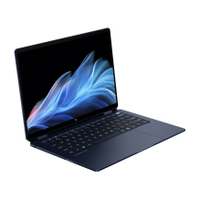
Sharp Intel CPU performance topped off with an OLED 2-in-1 touchscreen and a well-made casing. 14 hours of battery life too.

Thank you for reading 5 articles this month* Join now for unlimited access
Enjoy your first month for just £1 / $1 / €1
*Read 5 free articles per month without a subscription

Join now for unlimited access
Try first month for just £1 / $1 / €1
out of 10
While it suffers from the same GPU issues - namely a lack of power and compatibility - as other Snapdragon laptops, the HP Omnibook X 14 pulls a rabbit from the hat in the form of extremely long battery life, even when compared to other ARM-based machines. This means it’s ideal for the traveller, the sofa-worker, or the late-night idea-haver.

Ian Evenden has been a journalist for over 20 years, starting in the days of QuarkXpress 4 and Photoshop 5. He now mainly works in Creative Cloud and Google Docs, but can always find a use for a powerful laptop or two. When not sweating over page layout or photo editing, you can find him peering at the stars or growing vegetables.
You must confirm your public display name before commenting
Please logout and then login again, you will then be prompted to enter your display name.
